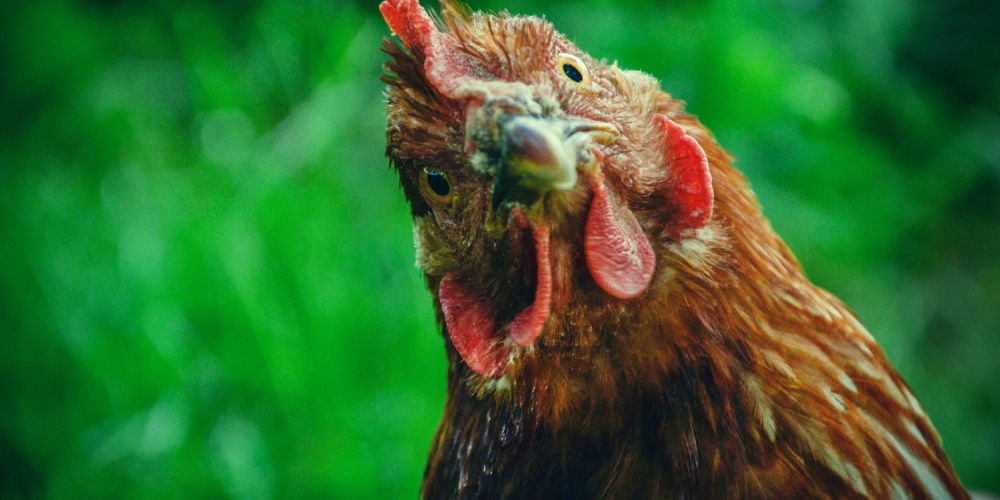
The toy industry has come a long way since Talmudic times. Perhaps the most popular "toy" during the Talmudic era was that of a chicken’s head. It was the need for the chicken’s head—I’m not quite sure how the game was played—that serves as the background to one of most famous and important principles of the laws of Shabbat, namely, that of p’seik reisha.
This principle is actually a question—a rhetorical one, no less—the full wording of whichs is p’seik reisha v’lo yamut, which translates as, “[Can one] cut off its head and it will not die?” In modern terms, we might call this principle the law of unintended—but unavoidable—consequences.
Rabbi Shimon and Rabbi Yehuda have a longstanding debate as to whether one is liable on Shabbat for a davar she’eino mitkaven, something for which one does not intend (see for example, Shabbat 22a). Such occurs when one performs a permissible act on Shabbat but that permissible act may cause a prohibited act to occur. The classic example is that of schlepping a table on the ground on Shabbat. One may or may not make a chareetz, a furrow, the making of which is prohibited on Shabbat under the rubric of ploughing. However, since one’s intent is to move a table and not to make a furrow, and since it is not at all certain that such will happen, Rabbi Shimon argues that even if one accidentally created a furrow, one is not liable for violation of Shabbat. It is “something for which one did not intend” and hence, one is not even considered to have violated Shabbat accidentally and no atonement would be needed.
While Rabbi Yehuda disagrees, the halacha follows the more lenient approach of Rabbi Shimon. However, the Gemara notes that if the unintended consequence is an unavoidable result, i.e., a p’seik reisha, then even Rabbi Shimon would agree it is forbidden on Shabbat. One cannot be said to have no intent—and one violates Shabbat only if one intends to commit the forbidden action—if the intent is unavoidable. Hence the rhetorical question: Is it possible to cut off a chicken’s head and it will not die[1]? True, the father is doing so for the sole purpose of giving his children a toy to play with [2] and has no desire to harm the chicken, but such argument carries no weight. He is guilty of netilat neshama, of extinguishing life, one of the 39 categories of prohibited work on Shabbat[3].
Another popular toy during Talmudic times was a grasshopper. We have previously discussed (see here) how the type of grasshopper game played impacted on the laws of Shabbat.
What does all this have to do with masechet Bechorot? As you may have guessed by now, another game favoured by the children of Talmudic times was playing with a firstborn animal[4].
“One time, children were playing in the field and they tied the tails of lambs to each other, and the tail of one of them was severed, and it was a firstborn” (Bechorot 35a). As we discussed in our last post, if one intentionally causes a blemish to a bechor—and a severed tail qualifies—that blemish would not render the bechor permitted for slaughter. And according to some, that animal could never be slaughtered, to help deter those who might purposely cause a blemish. However, the Mishna exempts children, who have little interest in the niceties of the law of the bechor (even presuming they knew about such a law), and just want to have some fun—even if misplaced—with the animal. And thus, when it “came before the Sages…they deemed its slaughter permitted”.
Children being children, and “seeing that [the bechor] was permitted”, they “went and tied the tails of other firstborn animals”. This time when they caused a blemish, the rabbis forbade the slaughter of the animal. One must nip bad habits in the bud, and when it comes to children, doing so is the parents’ responsibility. In this case, it meant ensuring their children play with something else. Chess, anyone?
This distinction between an initial honest mistake and a repeat performance applies no less to adults than children. The same Mishna that details the children’s game of “tie the tail” begins by telling of an incident where a Roman official wondered why a Jewish-owned ram had such long hair. When told that Jews were not allowed to shear the wool of a firstborn unless it had a blemish, he took a knife and made a cut to the ram’s ear. He was acting as a nice “Shabbos goy”, helping to make life easier for Jews, and oblivious to the fact that he did anything improper. As he acted most innocently, and without instruction of the Jewish owners, the rabbis allowed the ram to be slaughtered.
“After they permitted” the ram for slaughter, the Roman went and slit the ears of other bechorot, but to no avail. The Rabbis forbade the slaughter of these animals due to this blemish. Not because the Roman did anything wrong, but having witnessed his willingness to help even without being asked, the Jewish owners had the responsibility to explain that one may not have a non-Jew do for us that which we are forbidden to do ourselves.
Games may be for children, but there is much we can all learn from the rules of the game.
[1] Quoted more than ten times in the Talmud, this phrase always comes to explain why some proposed activity is in fact prohibited on Shabbat. While no dissenting opinion is ever expressed, the clear implication is that others disagreed, at least initially, and thought to permit the activity. This is bolstered by the fact that the prohibition is always quoted with the introductory phrase, “But Abaye and Rava both agree (that a p’seik reisha is not allowed”. This leaves open the possibility that while Abaye and Rava agree, perhaps others don’t. When one considers that Abaye and Rava were amongst the last of the Talmudic scholars, one could be forgiven for arguing that the universal acceptance of the prohibition of p’seik reisha took some time.
[2] The above follows the explanation of Rashi and the Tosafists. Rabbeinu Chananel however, (Shabbat 133a) understands the question to be referring to a robber who chops off the head of his victim and then claims he had not intention to kill him; he just wanted to take his money. Needless to say such a claim is rejected and he would be charged with murder.
[3] I wonder if our Sages used the example of a chicken’s head to teach about p’seik reisha—after all, there are myriad other examples they could have used—in order to highlight the fact that killing animals for fun, even if the harm is unintended, is not something we should be doing. It can in fact lead to chilul Shabbat, which is something all understood. This idea is backdrop to the responsa of the Noda BeYehuda (Yoreh Deah #10) where he explains that, while there may not be a technical violation of Jewish law to hunt, it is most inappropriate and puts one in the category of activities led by Nimrod and Eisav.
[4] It is most likely children did not really care if they were playing with a firstborn animal or any other. But since the halachic ramifications are manifest in games with the firstborn, that is the focus of the Talmudic discussion.



